Have you ever been jolted awake by the loud music from next door or found yourself struggling to concentrate because of the constant chatter from your upstairs neighbors?
The desire for a quiet, peaceful space amidst the clamor of everyday life has led many to seek refuge in their own homes, only to be thwarted by thin walls and noisy neighbors.
Soundproofing isn’t just a luxury; in today’s densely populated urban environments, it’s a necessity.
Creating a sanctuary free from intrusive noises doesn’t require moving out or engaging in neighborhood disputes.
Instead, with the right techniques and materials, you can transform your living space into a haven of tranquility.
Before you resign yourself to a life of noise-induced headaches, there’s hope.
Let’s dive into the world of soundproofing and explore actionable steps you can take to shield your home from unwanted disturbances.
Understanding the Basics of Soundproofing
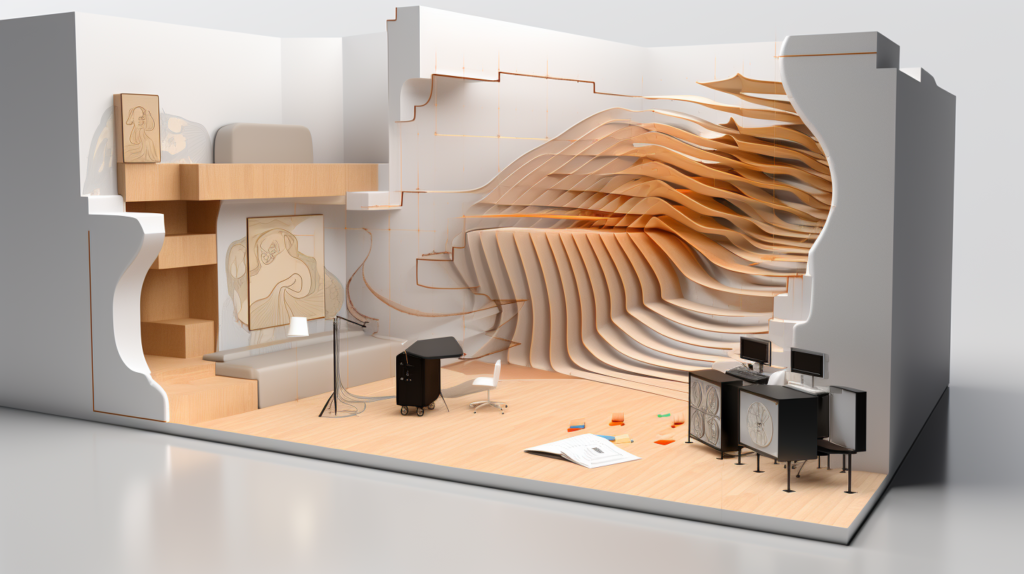
Sound, at its core, is a type of energy produced by vibrations.
These vibrations, whether originating from a musical instrument, a construction site, or a voice, disturb the surrounding air molecules.
As these molecules get disturbed, they create a ripple effect, similar to dropping a stone in a pond.
These ripples, or waves, move outward until they hit an obstacle or dissipate with distance.
The waves, when they reach our ears, are interpreted as sound.
Difference Between Soundproofing and Sound Absorption
When we talk about creating a peaceful environment, we often hear two terms: soundproofing and sound absorption. While they might seem interchangeable, they serve distinct purposes.
Soundproofing is the science of preventing sound waves from entering or exiting a particular space. Think of it as building barriers or fortresses against unwanted noise.
On the other hand, sound absorption aims to enhance the sound quality within a given space.
By using absorbing materials, we reduce echoes and reverberations, making the sound more clear and pleasant.
Identifying the Sources of Neighbour Noise
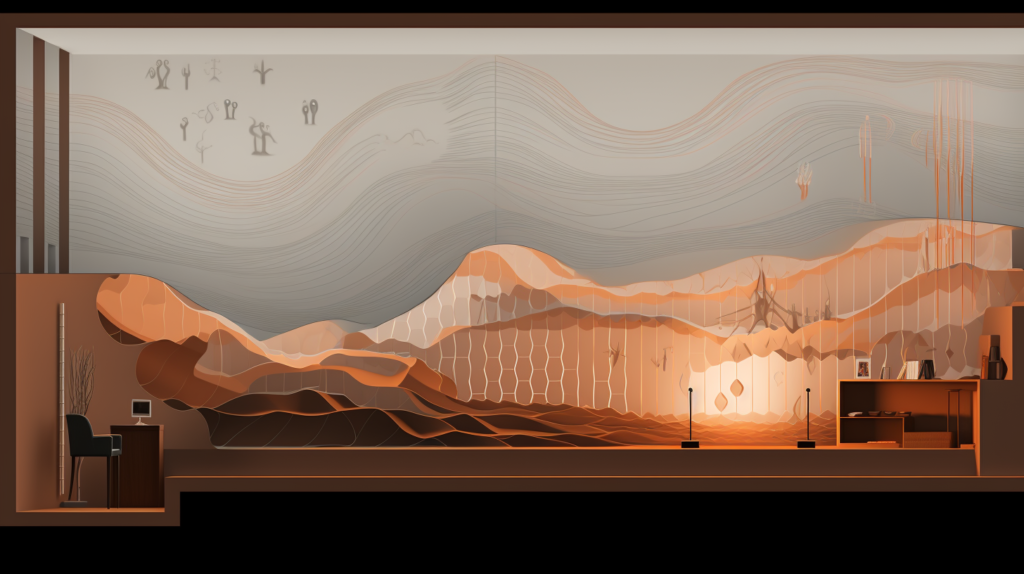
In the world of acoustics, noises typically fall into two main categories: impact and airborne.
Impact noise, as the name suggests, arises from the collision of two objects. Imagine the sound of footsteps on a hardwood floor or a ball bouncing on a ceiling; that’s impact noise.
Airborne noise, on the other hand, originates from sources like voices, TV, or music. These sounds travel through the air and can be intrusive if not managed well.
Common Neighbor Noises and Their Sources
Every residential area has its distinct set of sounds. Depending on the location, construction, and the inhabitants, the noise profile varies.
Some might complain about loud music from a teenager’s room, while others get disturbed by a dog’s incessant barking.
In apartment settings, the sound of footsteps, items dropping, or even loud conversations can be a cause of concern. Recognizing the type of noise is the first step in addressing it effectively.
Soundproofing Walls: Your First Line of Defence

At first glance, walls might seem like simple barriers dividing spaces. However, when it comes to sound, their role becomes pivotal.
The thickness, materials used, and the method of construction can determine how much sound a wall can transmit.
For instance, a hollow wall will invariably let more noise pass through than a solid one.
Knowing your wall’s construction is essential, as it lays the foundation for effective soundproofing.
Adding Mass: Soundproofing Foam and Drywall
In the journey to achieve a quieter environment, increasing the mass of walls stands out as a reliable method.
The principle behind this is straightforward: walls with greater density are less susceptible to vibrations, thus diminishing their ability to conduct sound.
Incorporating soundproofing foams, such as mineral wool and fiberglass wool, provides this much-needed density.
After installing these foams, sealing them with drywall not only enhances the soundproofing effect but also offers a polished, finished look.
This approach is both effective and aesthetically pleasing, making it a top choice for many seeking solace from noise.
Decoupling Techniques: Add Resilient Channels, Sound Clips
Imagine a bridge that sound waves use to travel. Now, what if we break or weaken this bridge? The sound waves won’t be able to cross efficiently.
This is the essence of decoupling. By introducing gaps or breaks in the wall structure, we prevent sound waves from traveling seamlessly.
Tools like resilient channels or sound clips can help achieve this. They create a slight separation between the wall and the drywall, effectively disrupting the sound waves’ pathway.
Seal Up Any Gaps With Acoustic Sealants
Even with the best soundproofing materials, tiny gaps or cracks can betray your efforts. These minor breaches can become highways for noise.
Acoustic sealants come to the rescue here.
Designed specifically for soundproofing purposes, these sealants fill gaps and prevent sound leaks.
Flexible and durable, they ensure that every nook and cranny is sealed, guaranteeing a quiet environment.
Soundproofing Ceiling Solutions for Upstairs Noises

Much like walls, ceilings are integral components in the dynamics of sound transmission, particularly in multi-level structures.
A drop ceiling, also referred to as a suspended ceiling, provides an added layer of separation from the primary ceiling above.
This distinct space is instrumental in minimizing noise seepage from the level above.
Beyond its functional aspect, drop ceilings offer homeowners the flexibility of design, ensuring that while they enjoy a quieter environment, they don’t have to compromise on the aesthetics of their space.
Constructing the Suspended Ceiling: Joists and Wall Studs
The foundational step in creating a drop ceiling is to set up joists or wall studs. These horizontal beams provide the necessary support and structure to the ceiling.
Properly spaced and securely fastened joists ensure that the ceiling remains stable and can effectively bear the weight of the additional soundproofing materials.
Incorporating Soundproofing Foam
Once the joists or wall studs are in place, the next step is to introduce soundproofing foam between them. Materials like mineral wool or fiberglass wool are ideal for this purpose.
These foams add density to the ceiling, making it more resistant to sound vibrations.
This layer serves as the primary defense against noise intrusion, absorbing and dissipating sound waves before they can penetrate further.
Installing Resilient Channels
With the soundproofing foam in place, the next phase involves installing resilient channels. These channels, typically made of metal, are fixed across the joists or wall studs.
Their primary function is to provide a break in the pathway of sound waves.
By creating this separation, resilient channels ensure that vibrations from the upper floor don’t get directly transmitted to the drywall, further enhancing the ceiling’s soundproofing capability.
Finishing with Drywall
The final layer in this soundproofing endeavor is the drywall. Mounted onto the resilient channels, the drywall serves two main purposes.
Firstly, it acts as an additional barrier to sound, its dense nature preventing noise from filtering through.
Secondly, it offers a smooth, finished look to the ceiling, ensuring that the room remains aesthetically pleasing.
With the drywall in place, homeowners can be assured of a significant reduction in upstairs noises, making their living space tranquil and serene.
Tackling Noises from Below: Being Considerate to Neighbors
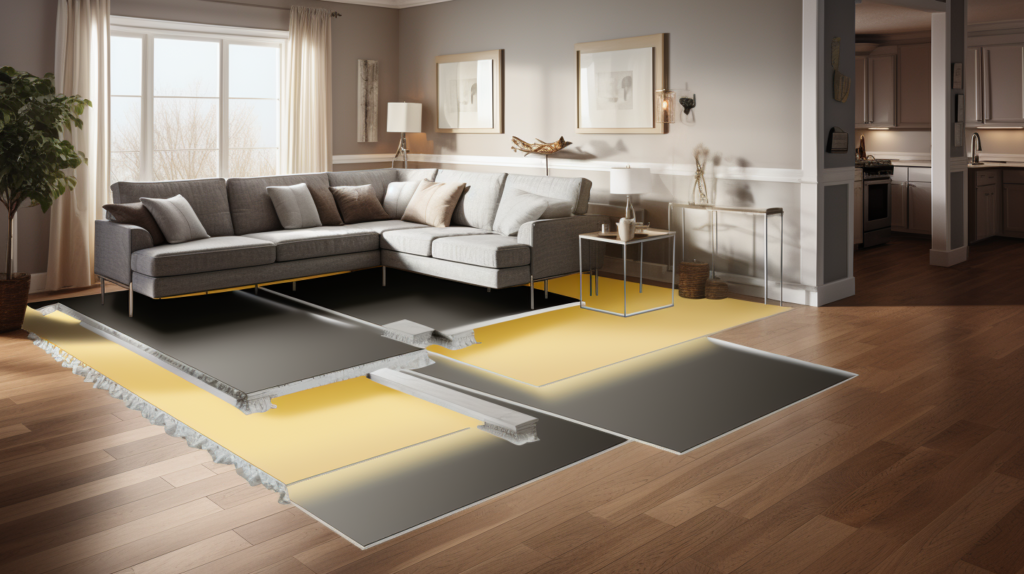
In multi-story residences, our daily activities can inadvertently become a source of disturbance for those living below.
One of the most effective measures to ensure we minimize this disturbance is by installing underlayment.
Positioned between the primary floor and the finishing layer, such as hardwood or carpet, underlayments act as buffers.
They significantly reduce impact noises, like the sound of footsteps or objects being dropped.
By doing so, not only do we enhance our living experience, but we also ensure that we aren’t inadvertently disrupting our neighbors’ peace.
Investing in Interlocking Floor Mats
Another simple yet effective measure is the use of interlocking floor mats. Beyond providing comfort underfoot, these mats serve a crucial role in sound insulation.
Crafted from materials with sound-absorbing properties, these mats minimize the transmission of both impact and airborne noises.
The interlocking design is particularly beneficial as it guarantees a tight fit, leaving no room for sound leaks.
By incorporating these mats into our living spaces, we make a conscious effort to be considerate, ensuring our daily activities don’t intrude upon the tranquility of those living beneath us.
Soundproofing Doors: Often Overlooked But Crucial
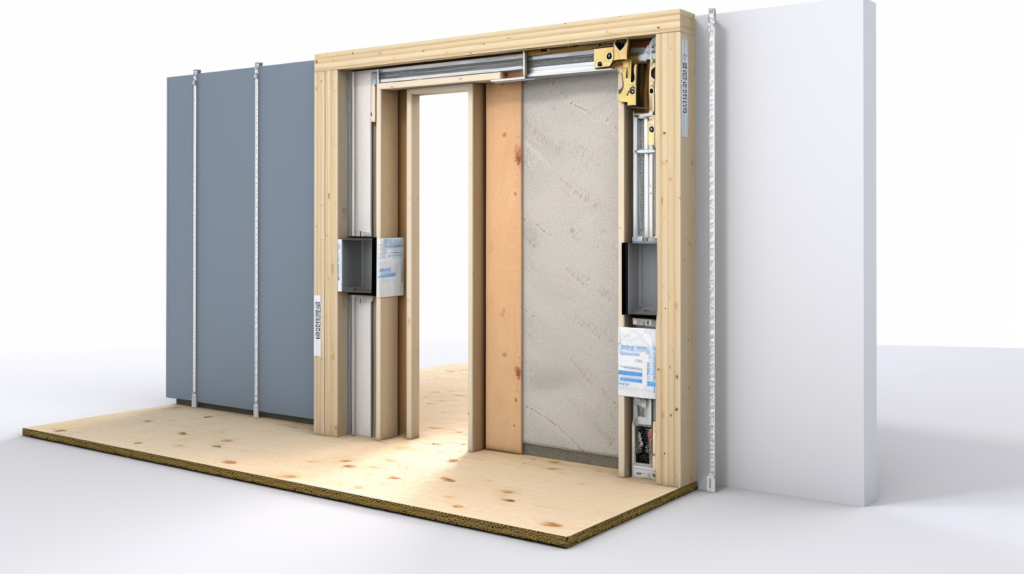
While doors might seem like just another part of a room’s decor, they play a significant role in sound transmission.
A common oversight in many homes is the use of hollow interior doors, which easily allow sounds to permeate.
Upgrading to solid core doors can dramatically alter this dynamic, as their denser construction acts as a robust barrier against noise.
If replacing the door isn’t feasible, an alternative solution is to add soundproofing panels to the existing door.
These panels densify the door’s surface, significantly reducing its sound permeability and ensuring a quieter environment.
Weatherstripping: Ensuring a Tight Seal
One of the most common culprits of sound leakage around doors is the small gaps that exist around door frames.
These gaps, while seemingly insignificant, can allow a surprising amount of noise to seep through. Installing weatherstripping around the door frame addresses this issue effectively.
By creating a tight seal when the door is closed, weatherstripping ensures that sounds are confined to their respective spaces, preserving the tranquility of adjacent rooms.
Incorporating Door Bottoms for Complete Soundproofing
The gap at the bottom of a door, often overlooked, can be a significant pathway for noise. A door bottom is a perfect solution to this problem.
Designed to fill the space between the door and the floor, door bottoms prevent sound from sneaking through this often-neglected gap.
By ensuring that every potential sound leak around the door is addressed, homeowners can rest assured of a comprehensive soundproofing solution that stands strong against external disturbances.
Soundproof Ventilation and HVAC Noise Control
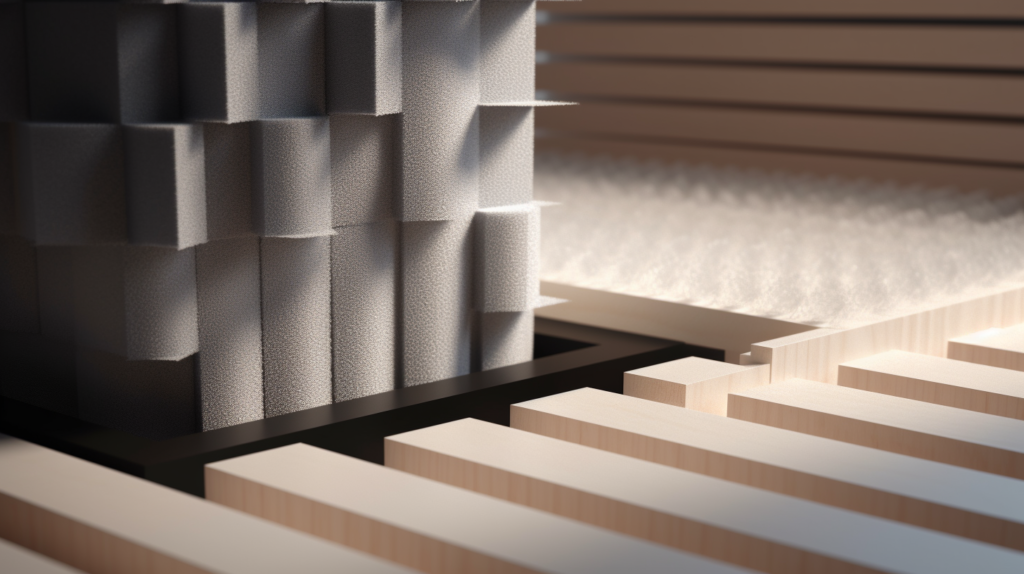
Vents, essential for airflow in homes, can unfortunately act as conduits for sound. Noise can travel through these ducts, spreading disturbances from one room to another.
Understanding this pathway is crucial in addressing the challenge effectively.
Using Acoustic Vent Covers
A simple and effective solution to vent-related noise is the use of acoustic vent covers. These covers, made from sound-absorbing materials, fit over existing vents.
They reduce the amount of sound that can pass through, ensuring that your HVAC system doesn’t compromise your peace.
Soundproofing HVAC Systems and Ductwork
For those looking for a more comprehensive solution, soundproofing the entire HVAC system and its associated ductwork might be the answer.
This involves wrapping ducts in soundproofing materials and adding silencers or mufflers to the system.
Such measures ensure that noises generated by the HVAC system, or those traveling through it, are minimized.
Conclusion
In today’s bustling world, the quest for tranquility within our homes has never been more paramount.
As we’ve explored, the nuances of soundproofing are both varied and intricate, spanning from walls and ceilings to the very floors we tread upon.
By understanding the fundamental principles of sound and the distinct methods to contain or enhance it, we equip ourselves with the tools to craft a personal sanctuary—a haven free from the cacophony of external disturbances.
Whether it’s the distant hum of traffic, the reverberation of footsteps from above, or the animated conversations of neighbors, effective soundproofing ensures these sounds remain just where they should be: outside our personal space.
By investing time and effort into these soundproofing endeavors, we’re not only enhancing our immediate living environment but also showing consideration for those around us.
After all, a peaceful home isn’t just a space where noise doesn’t enter; it’s one from which serenity emanates.
